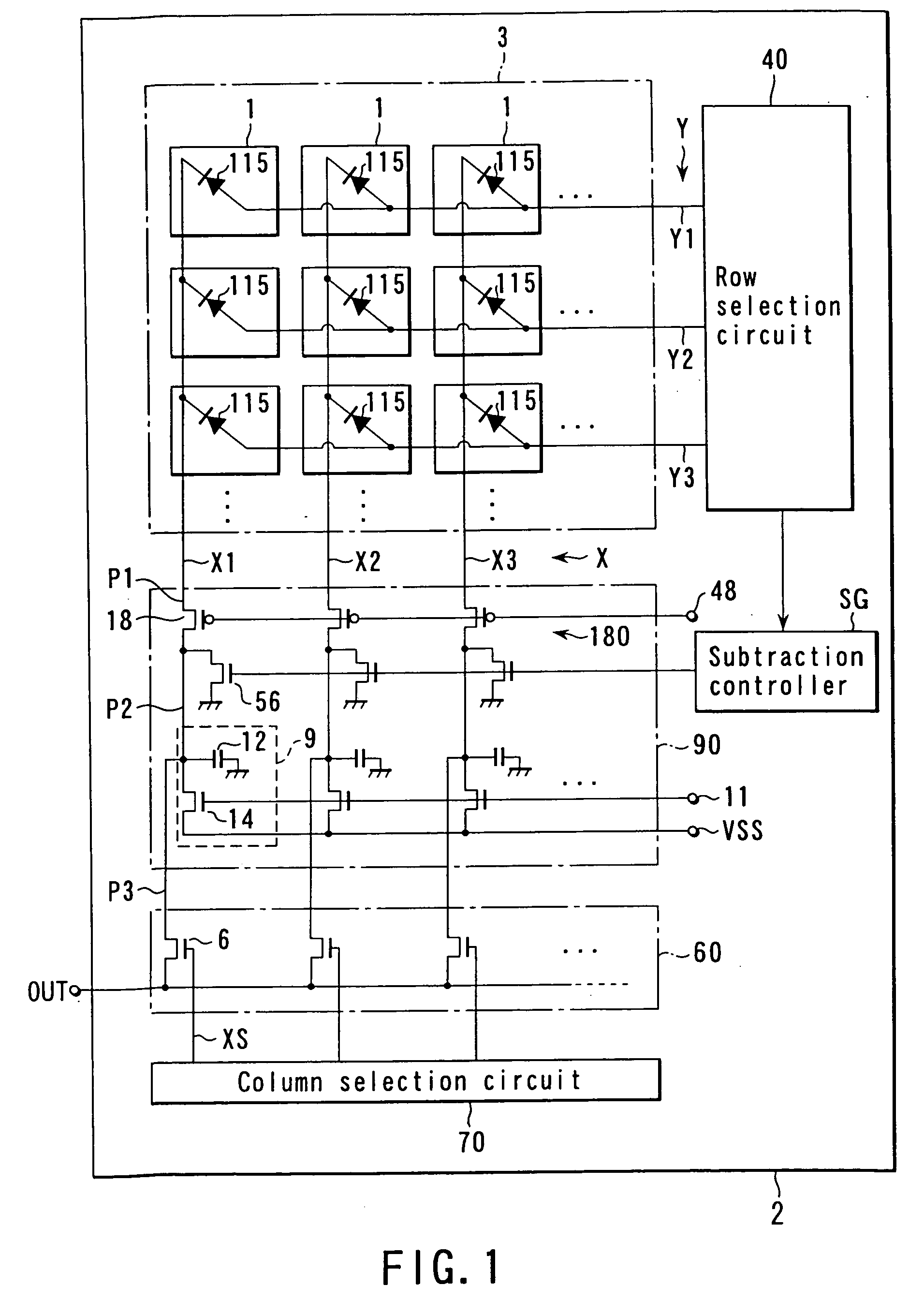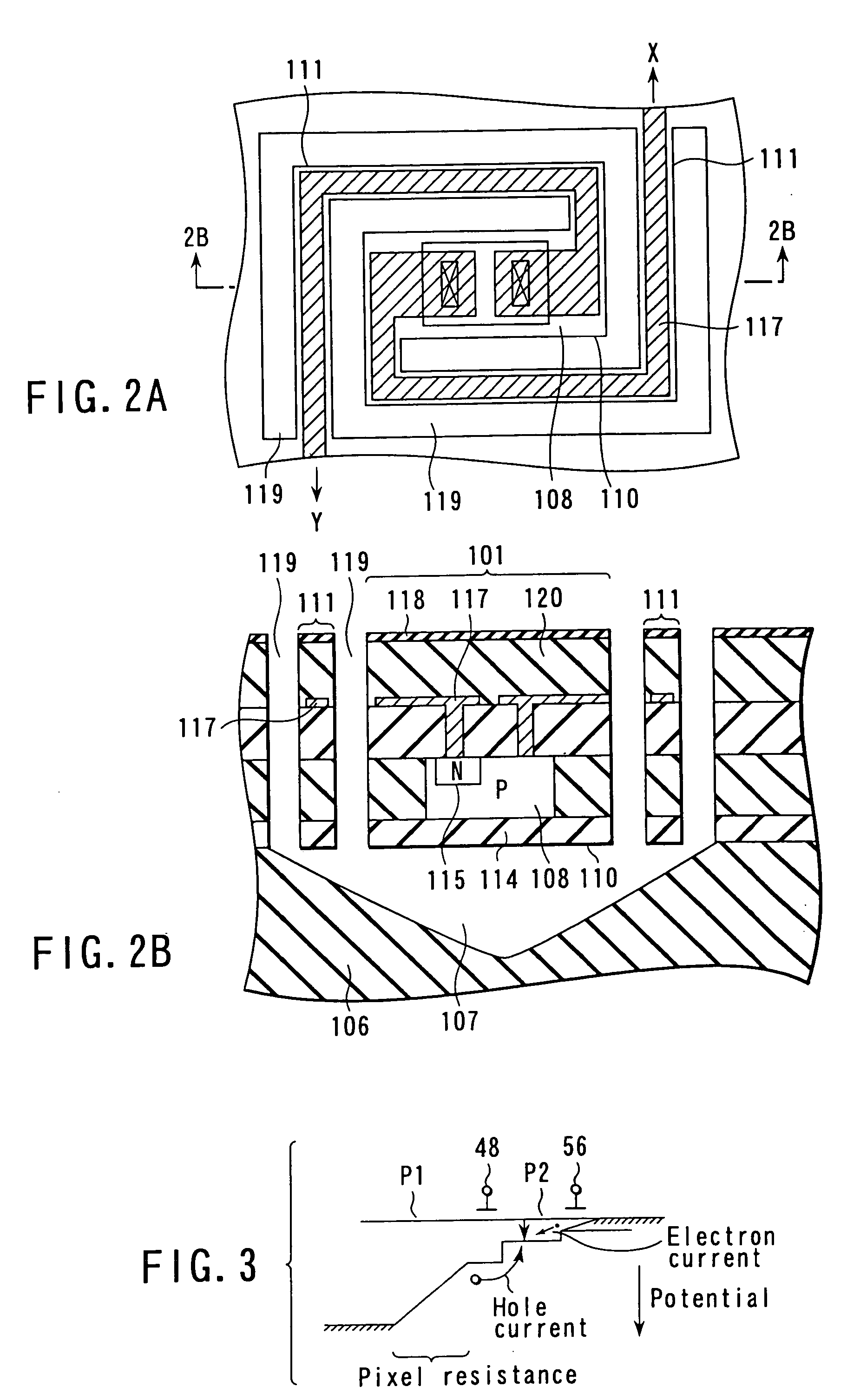Solid-state infrared imager
a solid-state infrared and imager technology, applied in the direction of instruments, radiation controlled devices, optical radiation measurement, etc., can solve the problems of limiting the signal bandwidth, the cooling system is required for low-temperature operation, and the problem of solid-state infrared imagers have some problems, etc., to achieve high sensitivity, low noise level, and wide dynamic range
- Summary
- Abstract
- Description
- Claims
- Application Information
AI Technical Summary
Benefits of technology
Problems solved by technology
Method used
Image
Examples
first embodiment
An uncooled solid-state infrared imager according to the present invention will be described below. FIG. 1 shows the whole configuration of the uncooled infrared sensor. As shown in FIG. 1, in the uncooled solid-state infrared imager, a signal line potential stabilizing circuit 180 for stabilizing the potential of each signal line X into a constant level is provided instead of the constant current source 80. Components similar to those shown in FIG. 17 are represented by same reference numerals in FIG. 1, and the descriptions thereof are simplified or omitted. In the subsequent embodiments, the similar components are represented by the same numerals and the descriptions thereof are simplified or omitted as well.
The uncooled solid-state infrared imager shown in FIG. 1 operates in substantially the same manner as those in FIGS. 15 and 17, except that the potential stabilizing circuit 180 provides a constant voltage biased current readout system in which the temperature information of...
third embodiment
the potential of the node P2 becomes the same as that input from the voltage terminal RF to the (+) input terminal 32. Therefore, the operational amplifiers 30 serve as the signal line potential stabilizing circuit 180. Therefore, it is possible to completely prevent the negative feedback to the signal line potential caused when a load resistor is used as a simple circuitry for current voltage conversion. Furthermore, since the operational amplifier 30 performs voltage amplification, it is unnecessary to increase a resistance of the load resistor RL, and it is possible to remarkably reduce thermal noise as random noise generated in the load resistor.
FIG. 8 shows a first modification of the column amplifier 9 shown in FIG. 6. In this modification, the column amplifier 9 includes two inverter circuits 36A and 36B which are connected in series at a stage behind the operational amplifier 30, and each of which has a CMOS structure of p- and n-channel MOS transistors as shown in FIG. 9. T...
fourth embodiment
the non-sensing pixels 501 and the infrared sensing pixels 1 are formed in the common semiconductor substrate 2. Therefore, the temperature of the non-sensing pixel 501 changes due to the self-heating effect in substantially the same tendency as the temperature change of the infrared sensing pixel 1, and a current caused by self-heating flows in the signal line Xn+1. A self-heating component is the major part of the signal current in each of the signal lines X1 to Xn. With current removal circuit which is formed of the n MOS transistors 56 of the column amplification circuit 90 and the MOS transistor 57, a bias current component including the self-heating component is effectively cancelled without requiring any circuit-tuning of voltage or the like. More specifically, each MOS transistor 56 subtracts a bias current component including the self-heating component from the current flowing in a corresponding one of the signal lines X1 to Xn by the control of a voltage generated by the s...
PUM
 Login to View More
Login to View More Abstract
Description
Claims
Application Information
 Login to View More
Login to View More - R&D
- Intellectual Property
- Life Sciences
- Materials
- Tech Scout
- Unparalleled Data Quality
- Higher Quality Content
- 60% Fewer Hallucinations
Browse by: Latest US Patents, China's latest patents, Technical Efficacy Thesaurus, Application Domain, Technology Topic, Popular Technical Reports.
© 2025 PatSnap. All rights reserved.Legal|Privacy policy|Modern Slavery Act Transparency Statement|Sitemap|About US| Contact US: help@patsnap.com



